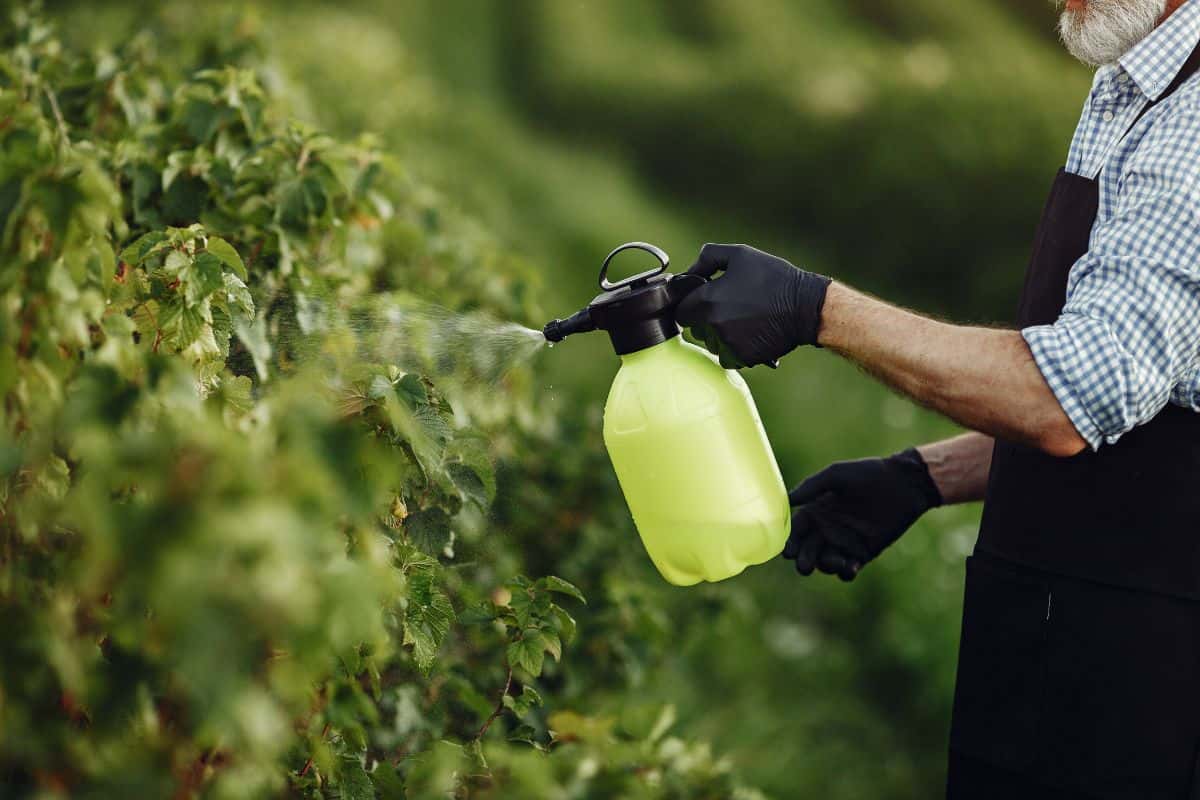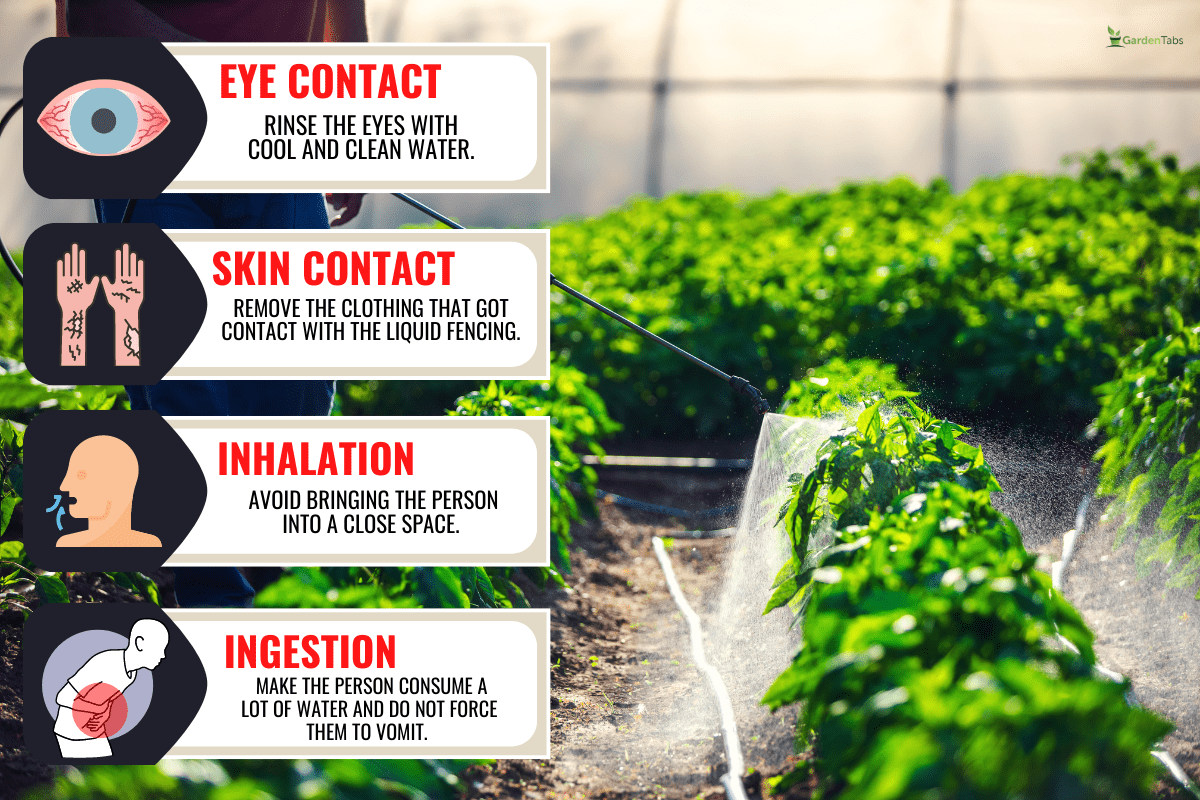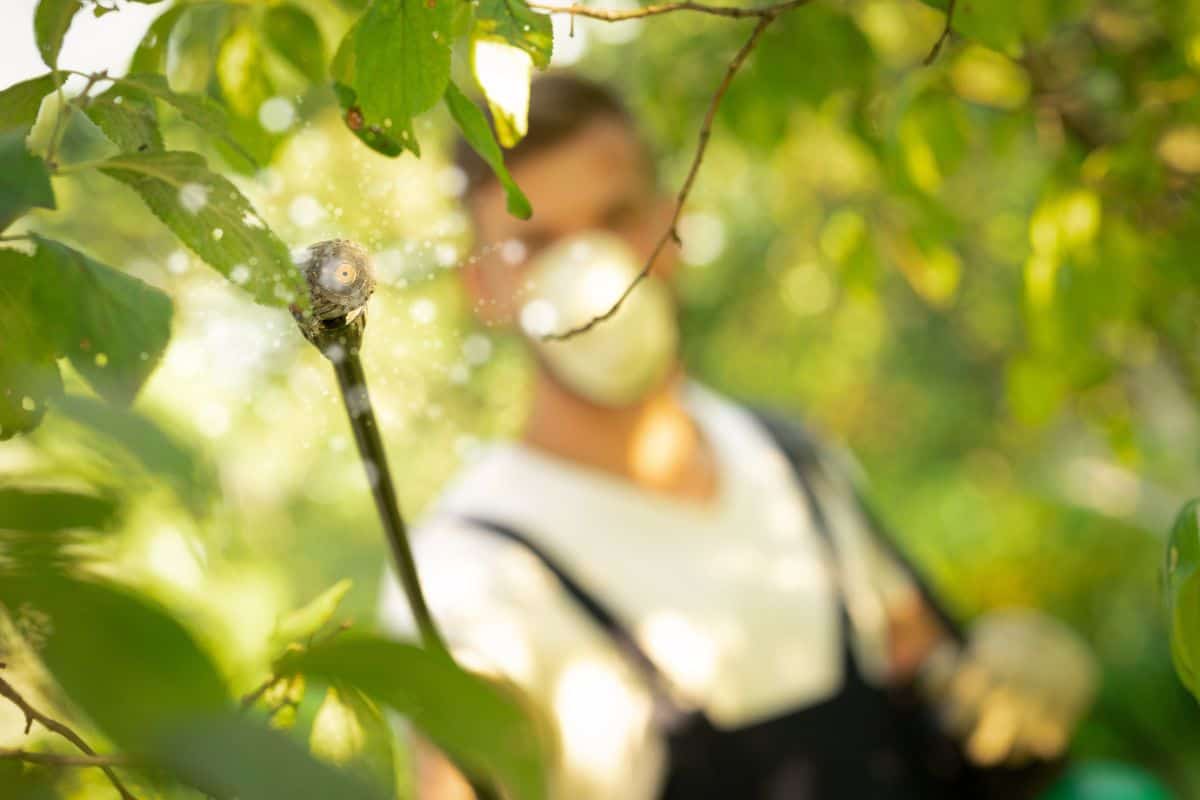One of the problems that planters deal with is trespassing animals that eat their crops.
If you have the same problem with your vegetable garden, using an animal repellant such as Liquid Fence must be the solution you are thinking about. But are they not dangerous? We have researched if Liquid Fence is safe for vegetables. Here is what we found out:
Liquid Fence is safe to use on vegetables. The repellant effectively keeps animals like rabbits away from edible plants. However, Liquid Fence solution should not be sprayed onto the foliage surface as its ingredients can impose hazards when coming in contact with a person.
Then, what is the proper way to apply it to the vegetable garden? What are the hazards that it can cause to humans?
What if you consume a vegetable that has a Liquid Fence on it? These are some of the questions we will answer in the following sections of this post.
That is not all! Other critical related queries are also going to be discussed. So, keep on reading!
How To Use Liquid Fence Safely For Vegetables
The best way to safely use Liquid Fence on vegetables is to follow the instructions given by the manufacturer properly.
Spraying the repellant directly on the plants is okay. The repellent keeps away insects, mammals, or other creatures that might be a nuisance or threat to the plants' health.
However, when using repellent on edible plants, several concerns arise.
Firstly, the repellent might leave harmful residues on the produce, even if labeled as natural. This residue could be harmful if consumed.
Secondly, repellents can change the taste of the produce, making it unpleasant.

For edible plants, you should apply a Liquid Fence around the area of the plant far enough away to ensure that the product will not come in contact with them.
Why should you keep it away from the chemical repellant? There are two reasons behind this.
Even if it is claimed to be safe to use around pets and kids, Liquid Fence can also cause some harm to humans. To further understand, let us first take a look at its components:
- Putrescent Egg Solids
- Garlic Powder
- Sodium Lauryl Sulfate
- Xanthan Gum
- Potassium Sorbate
- Water
If you noticed, some of the ingredients are also present in the other products we consume, such as the Sodium Lauryl Sulfate used in dental care products such as mouthwash or toothpaste.
Another is Potassium Sorbate, a preservative they use for food products such as apple cider, cheese, canned fruits and vegetables, ice cream, yogurt, wine, and many more.
But it is still a chemical designed to repel animals, not for human consumption. According to Liquid Fence themselves, there are health hazards that the user should know when they are overexposed to the repellant.
Liquid Fence Hazards

Here is a list of hazards you can get from exposure to Liquid Fence and what will cause you to be affected.
- Eye irritation - Eye exposure or contact
- Skin irritation - Skin exposure
- Respiratory tract irritation - Inhalation
- Stomach distress - Ingestion
- Nausea - Ingestion
- Vomiting - Ingestion
Furthermore, prolonged exposure to Liquid Fence can even result in chronic effects such as dermatitis, defatting, and drying.
First Aid For Liquid Fence Hazards

In case you have any of the effects above, Liquid Fencing also provides a first aid measure that you can do.
- Eye contact - Rinse the eyes with cool and clean water. If the person is wearing contact lenses, remove them before rinsing.
- Skin contact - Remove the clothing that came into contact with the Liquid fencing. Using mild soap and cool water, wash the affected skin.
- Inhalation - Avoid bringing the person into a close space. Instead, make them go to an open area with fresh air.
- Ingestion - Make the person consume a lot of water and do not force them to vomit.
Even after doing the proper first aid measures, seeking medical attention is essential, especially if the affected person still feels unwell.
Are you wondering what the best Marigolds for pest control are? We have listed down five types that you can use for your yard. Check them out in this article: Best Marigolds For Pest Control [5 Types For Your Yard]
How Often Do You Need To Apply Liquid Fence?
If the vegetation is dry when you apply the Liquid Fence, which can dry completely for 5 to 6 hours without rain, then you can apply the repellant once a month.
What if it rained? Will the Liquid Fence still be effective? Yes. However, note that this is applicable only if the vegetation is not exposed to more than 4 inches of water within a month.
This measurement is because, according to Liquid Fence, their product can only stand an inch of water per week. So, when the vegetation receives 5 inches of water, you must re-apply the repellant.
If you do not have a Liquid Fence yet, check out their deer and rabbit repellent on Amazon.
Does The Smell Of Liquid Fences Go Away?
According to Liquid Fence, the smell of Liquid Fences goes away once the repellant fully dries, generally taking about 5 to 6 hours.
Does that mean the repellant is not effective anymore, or is it gone already? While the human nose may no longer notice the odor, it is still vital for the targeted animals.
How Do You Get The Smell Of Liquid Fence Off Your Hands?

Liquid Fence's odor is described as intense and robust. If you did not notice the solution getting onto your hands, do not worry because there are various ways you can try to remove the bad smell.
Aside from using a beauty soap, these alternatives are proven to be effective in removing odor:
- Rubbing your hands with salt before rinsing with water.
- Using dental care products such as mouthwash or toothpaste as soap.
- Continuously rub your hands under running water with stainless steel, such as a spoon or fork, between your palms.
- Soak your hands in lemon or lime juice.
- Apply an ample amount of vinegar to your hands and let them dry.
Are you also having a problem with the chipmunks under your driveway? Read this article to learn how to get rid of them: How To Get Rid Of Chipmunks Under Your Porch Or Driveway.
Which Liquid Fence Is The Best?
According to reviews, the best Liquid Fence is the Deer and Rabbit Repellant. They tagged it with the title because the product is effective under different weather conditions. It's low maintenance, high-performance, and safe for pets and plants.
Are you planning on using Clethodim or Glyphosate to kill Brassicas? Found out in this article if those two solutions are adequate for the job: Will Clethodim Or Glyphosate Kill Brassicas?
Final Reminders

Always follow repellent product instructions to protect edible plants from deer and rabbits, like those of Liquid Fence.
Use physical barriers like fencing or netting and consider deterrents like motion-activated sprinklers or odor repellents.
Regularly monitor your garden, especially during peak animal activity times, and harvest ripe produce promptly.
Avoid spraying repellent directly on plant leaves; apply it around the garden's edges instead.
Direct application can pose health risks if consumed and might alter the taste of the produce due to residue. If someone feels unwell after consuming, they should seek medical attention.
However, it would be best not to spray the repellant directly on the foliage. Instead, apply it around the vicinity of the garden or crops, away from the vegetation. This condition is due to two reasons.
First, it may cause health hazards to its consumers when overexposed. If the affected person continues to feel unwell, they should take first aid and seek professional medical advice.
Second, the taste of the solution can linger since the product will adhere to the vegetable's surface once it dries up. So, if you pick the vegetable to consume, there is a possibility that the repellant's taste is still there.

